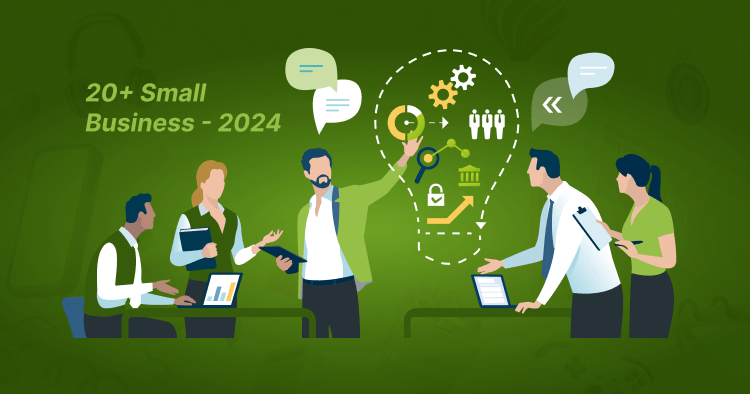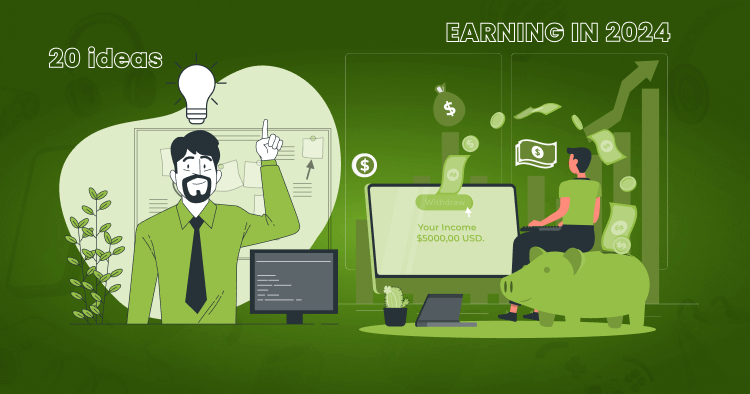Understanding business-to-business (B2B) interactions, the backbone of commerce is crucial. Gripping the intricacies of B2B interactions, their operations, successes, challenges, and opportunities is critical to navigating this economic machine.
This blog will explain the B2B meaning, the dynamics of B2B transactions, B2B success strategies, the challenges and opportunities, and the future of B2B.
Understanding Business-To-Business (B2B)
Business-to-business (B2B) transactions are commercial transactions between businesses. In these transactions, one company sells goods or services to another for their operations. This differs from business-to-customer (B2C) transactions, where a business sells to customers.
Characteristics of a B2B transaction
The characteristics of B2B transactions include:
- Larger order sizes. A B2B transaction involves larger purchase quantities than a business-to-consumer transaction—for example, raw materials or semi-finished goods.
- A more complex buying process. A B2B purchase requires a significantly longer decision-making process. It involves research, negotiations, evaluations, and multiple stakeholders for a deal. It differs considerably from buying a packet of cookies and a soda at a gas station.
- Having strong relationships with clients. They say your network is your net worth, and B2B is the same. It is crucial to have connections with everyone. This helps get favorable deals and exposure to more connections and presents learning opportunities. It also helps build trust and credibility in the market, one of any business’s most important assets.
- The indirect consumer impact. Even without the customer directly involved, the nature of B2B transactions impacts the customer. For example, if you’re getting an expensive raw material or operating in an area with costly utilities, the product will be priced much higher than usual.
These B2B characteristics also depend on the type of business. A few common examples include:
- Manufacturers rely on suppliers for machinery, raw materials, and various other components.
- Wholesalers buy bulk from manufacturers to resell to retailers, who then sell goods to the customers.
- Service businesses that offer various services like marketing, IT support, accounting, logistics, and more.
- Technology companies that build and sell hardware, software, cloud-based services, and other IT solutions to companies.
These are a few of the many businesses that operate under the B2B model. In this model, one company sells its expertise and effort to another business, spinning the economic wheel. Read ahead to learn how B2B transactions take place in more detail.
The Dynamics of B2B Transactions
In a B2C transaction, a customer pays a business for a product or service. Customers commonly purchase a single unit or small quantities. In a B2B transaction, several people are involved, and the transaction goes through various stages. A decision-making unit (DMU) is tasked with finding suitable offerings at the right price with the most minor logistics involved.
DMU members can include:
- Initiators that signal the need for a new product or service.
- Users who will ultimately use the product or service.
- Influencers that provide technical expertise and recommendations
- Decision-makers consider all factors and set things into motion
- Approvers who authorize the expenditure based on the available budget and compliance standards
The decision-making unit has an essential job. Their decision ultimately influences the final product customers will purchase. This is why it is important to be clear on the stages and components of the B2B buying process.
B2B Buying Process
The B2B buying process is more complex than B2C. Several stages are involved, some of which can take a long time. The most critical B2B steps include:
- Identifying the problem
- Researching solutions, i.e., the right vendors.
- Evaluating and shortlisting vendors and different options and requesting proposals from them.
- Negotiating contracts, terms, and prices that benefit both parties as much as possible.
- Making the final decision and finalizing the agreement between the business and vendor.
- Assessing vendor performance and how good or bad the final product was.
Factors that influence B2B Purchasing decisions
When making business decisions, various factors come into play. These include:
- Balancing the cost of acquisition with the potential long-term value of the purchase
- Ensuring that the purchase satiates the needs it was intended to.
- The vendor’s reputation, track record, reliability, and expertise must be rock solid.
- An established relationship between the business and the supplier plays a significant role. The company could get a better price and more value, and the supplier can leverage their relationship to get more business.
- When purchasing a product from a specific supplier, the company needs a proper risk management plan. Things can always go wrong, and a contingency plan must always be in place.
As we mentioned earlier, B2B transactions are significantly different from B2C transactions. Several components and factors must be considered when purchasing a product or service. This next section walks you through the process of ensuring your B2B transaction is as successful as possible.
Strategies for Success in B2B
So far, we’ve covered what is B2B and how its transactions work. Now, let’s explore how to make them as successful as possible. A successful B2B transaction comprises three components: strong B2B relationships, using tech in B2B transactions, and tailored marketing for B2B audiences.
Cultivating Strong Relationships
In business, good relationships can make a world of difference. In business-to-business transactions, successful relationships are considered a pillar of success. To cultivate a strong B2B relationship, here is what to do:
Be Customer-Focused
The end goal is to satisfy the client’s needs and wants. Take time to properly understand what the client wants, how they want it, the challenges they face, and their end goals. A clear view of their wants lets you deliver a better purchase experience.
Uncompromised Customer Service
Pre- and post-purchase customer service goes a long way. Ensure that your communication is prompt and their concerns are effectively addressed, and sprinkle in a bit of extra effort sometimes. This shows that you care for the customer and can go a long way in how they see you. Hint: in a good light.
Invest in Account Management
Have trained teams tasked with managing relationships with clients. Their job is to ensure the client is heard, understood and has a clean line of communication. Proper account management is pivotal in fostering long-term relationships.
Be Transparent With Communication
Communicate clearly with clients regarding all aspects of business, e.g., product specifications, variations, delivery times, and damage control policies. The last thing you want is for clients to discover something unfavorable down the line, potentially costing you their business.
Leveraging Technology in B2B
Incorporate various forms of technology to streamline B2B operations and remain competent. It is vital to do so in the digital age, and here is what you can do:
Use a CRM System
A customer relationship management (CRM) system lets you track sales, manage client relationships, improve communication, and more. A centralized system for these tasks makes life easier for the business and people involved.
Automate Marketing Efforts
Use various online tools to automate marketing tasks, create personalized outreach campaigns, and nurture leads. You can have this working 24/7, doing the job even after hours. Automating repetitive, time-consuming tasks also frees time for more impactful and vital work. Business-to-business marketing is different compared to traditional B2C marketing.
Use Data Analytics
Customer data from your CRM and marketing efforts can be used to gain insights into what customers want or do not want. This information can then be used to create personalized marketing campaigns that improve visibility and sales.
Leverage eCommerce Platforms
Online ordering and easier transactions can greatly benefit B2B transactions. This improves the purchasing experience by adding a layer of convenience and efficiency.
Tailored Marketing for B2B Audiences
B2B marketing requires more targeted efforts. The four most important ways to do this are:
Content Marketing
Create white papers and case studies to add more authority to your offering. These documents could include how your offering addresses business channels. It could demonstrate your expertise and explain why you’re the best option to work with.
Social Media Marketing
Focus on LinkedIn and Twitter for B2B social media marketing. Here, you can post about your products and services to attract potential clients’ attention. Maintain an active social media presence so more people see your business.
Account-Based Marketing
Offer your high-value clients with a more personalized outreach. This shows them you care enough to address them directly, creating a better relationship. Make them feel heard and understood; it always pays dividends.
Industry Events
Attend conferences and industry events to learn about current B2B trends, make new connections, and improve visibility. Train a team to market your offerings to potential customers and monitor the competition’s activities.
Conclusion
Understanding the intricacies of Business-to-Business (B2B) interactions is crucial for modern enterprises seeking growth and success. This comprehensive guide can help businesses navigate the complexities of B2B relationships with confidence and strategic clarity.
Embracing the nuances of what is B2B and its dynamics empowers organizations to forge stronger partnerships, drive innovation, and ultimately thrive in the competitive landscape of today’s interconnected business world. With a solid grasp of B2B principles and strategies, businesses can unlock new opportunities, foster long-term collaborations, and achieve sustainable growth in the dynamic realm of commercial interactions.
FAQs
What Is a B2B Company?
A B2B company sells its products and services directly to businesses instead of customers. It focuses more on fulfilling business needs than consumer desires.
What Is the B2B Marketing Definition?
B2B marketing involves using strategies tailored to promote products and services to other businesses. The aim is to understand clients’ business needs and foster strong relationships.
What Does B2B Sales Mean?
B2B sales are transactions between businesses. They involve negotiations, bulk orders, and the creation of strong business relationships, which are different from relationships between company and customer.
What Does B2B Stand For?
B2B stands for business-to-business.
How Does B2B Marketing Differ From B2C Marketing?
B2B marketing focuses on businesses by emphasizing efficiency and also meeting particular business needs. B2C marketing focuses on personal preferences and emotional appeals.



